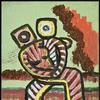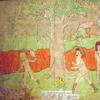New Acquisitions and Installations Mark The Charles Hosmer Morse Museum of American Art's 2020-21 Season
- WINTER PARK, Florida
- /
- July 05, 2020
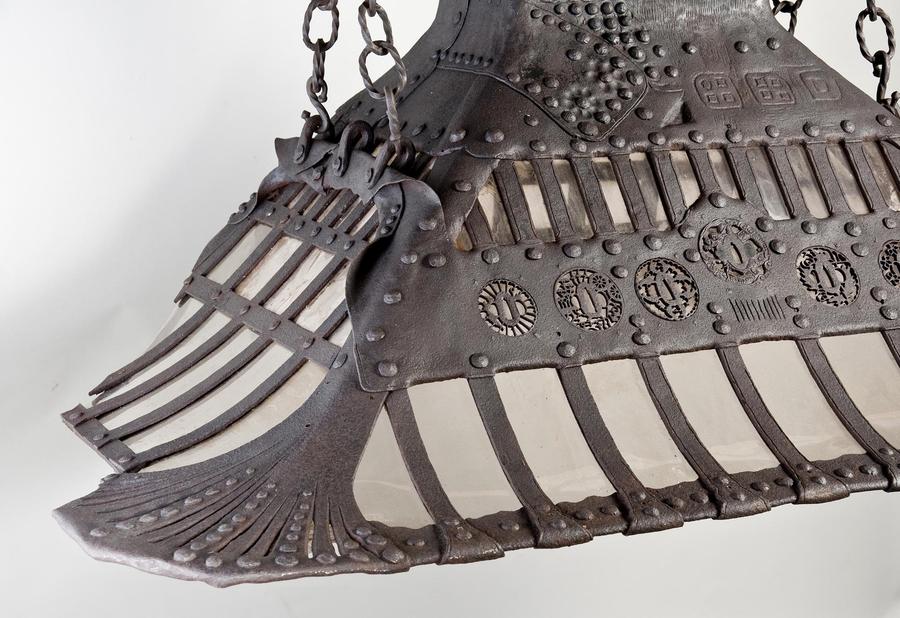
The Charles Hosmer Morse Museum of American Art will unveil a remarkable new acquisition to kick off its 2020–2021 season on October 20. The Morse acquired a fireplace hood created by Louis Comfort Tiffany (1848–1933) after it was shown last year in New York City. The fireplace hood will be installed into the Laurelton Hall wing at the museum in Winter Park, Florida.
Two installations will open on March 2, 2021. The exhibition, Watercolors from Louis Comfort Tiffany’s “Little Arcadia,” will feature a dozen designs by Alice Carmen Gouvy (1863–1924) and Lillian A. Palmié (1873–1944), distinguished designers in Tiffany’s enamel department. Acquired during the museum’s temporary closure, the watercolor-and-graphite designs of a skunk cabbage by Gouvy will be on display for the first time. A vignette will include a selection from over 145 pieces of Asian porcelain recently donated to the Museum by the family of Dr. Benjamin L. and Nancy Abberger.
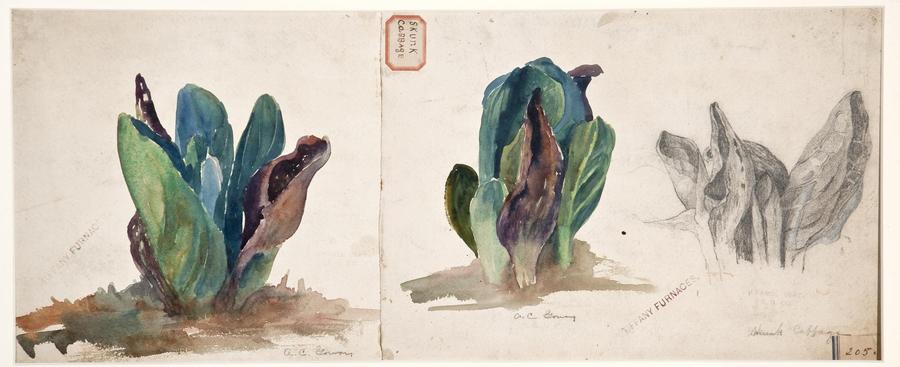
Due to COVID-19, the Morse Museum will expand its online offerings. At this time, all on-site lectures, music presentations, art demonstrations, and other in-person programs as well as social events at the Morse are canceled or postponed until further notice.
2020–2021 EXHIBITION HIGHLIGHTS
Fireplace Hood Installation
Opens October 20, 2020
A newly acquired c. 1883 Tiffany cast-iron fireplace hood from Laurelton Hall, Louis Comfort Tiffany’s celebrated Long Island home, is set to enrich the Museum’s Laurelton Hall galleries that contain the largest repository of art and architectural objects from Tiffany’s legendary estate. Thought to be lost to the fire that consumed much of the estate in 1957, the fireplace hood was one of his most cherished objects. The hood was originally designed, fabricated, and installed at Tiffany’s Seventy-Second Street house in New York City. In 1919, he had the fireplace hood removed and brought to Laurelton Hall. The Morse Museum’s installation of the massive fireplace hood, measuring over 66 inches tall and 55 inches wide, recalls its original setting in New York City.
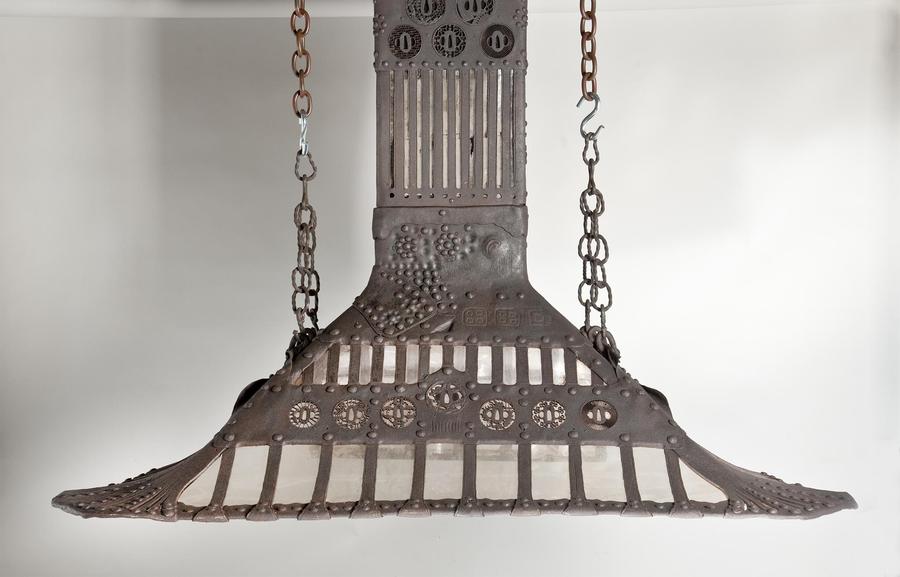
Watercolors from Louis Comfort Tiffany’s “Little Arcadia”
Opens March 2, 2021
Louis Comfort Tiffany (1848–1933) employed many designers, but only a handful of these individuals were selected to work in the enamel department, which Tiffany Studios employees somewhat enviously referred to as “little Arcadia.” Alice Carmen Gouvy (1863–1924) and Lillian A. Palmié (1873–1944) were two of those designers selected. At Tiffany’s idyllic workshop, Gouvy, Palmié, and others were able to freely pursue their creativity without the stresses of Tiffany’s more commercially driven shops. Watercolor studies, examining plant species in detail, lined the enamel workshop’s walls. The designs served as guides and inspiration for many Tiffany enamels, and later ceramics. This exhibition includes a dozen watercolors including one, a colorful and sensitive study of a skunk cabbage executed and signed by Gouvy, recently acquired by the Morse. The watercolor depicts two distinct views of the cabbage, giving the viewer a completely whole, three-dimensional sense of the plant.
Vignette: Chinese Blue and White Porcelain
Opens March 2, 2021
Chinese blue and white porcelain was among many Asian sources of inspiration for European and American artists and designers in the nineteenth and early twentieth centuries. Today, these precious Asian ceramic pieces are still avidly collected and enjoy a large popular audience. In the eighteenth century, two regional variations of porcelain—Canton and Nanking (both produced in the port city of Guangzhou)—emerged. The industry served westerners eager to add an exotic element to their dining rooms. Complete sets of Canton porcelain, fashioned to accommodate European eating traditions, were embellished with broad brushstrokes of toned blues depicting flowers, village scenes, and interweaving patterning. Nanking wares reflected the higher quality of export porcelain. They featured evenly executed cobalt scenes in more refined detail, often embellished with gold accents. Artists like James Abbott McNeill Whistler (1834–1903) and Louis Comfort Tiffany (1848–1933) admired the ornamentation of these Chinese ceramics and incorporated them into some of their most famous interiors. This vignette exhibits numerous examples of these in-demand Chinese ceramics ranging from around 1740 to 1890. The works were collected over the course of 40 years by life-long Orlando residents Dr. Benjamin L. and Nancy Abberger and recently donated to the Morse Museum by the Abberger family.
EXTENDED EXHIBITIONS
Vignette: Charles Hosmer Morse’s Study at Osceola Lodge
Extended until February 21, 2021
The Morse Museum’s current vignette Charles Hosmer Morse’s Study at Osceola Lodge displays, within a designed interior, furnishings and other objects from the study of Osceola Lodge in Winter Park. Charles Hosmer Morse (1833–1921), the Chicago industrialist and philanthropist for whom the Museum is named, began wintering in Winter Park in 1883 and purchased the house on Lake Osceola in 1904. Morse modernized the late nineteenth-century interior in the Arts and Crafts style with chairs and tables as well as decorative objects from such respected firms as Tobey Furniture Company in Chicago and the workshops of Gustav Stickley (1858–1942), the influential figure who helped popularize the movement’s reforming ideals across the United States. Osceola Lodge became Morse’s permanent home in 1915.
Earth into Art—The Flowering of American Art Pottery
Extended until September 26, 2021
The 1876 Centennial International Exhibition in Philadelphia, with its displays of fine French and Asian ceramics, begot American art pottery, the first truly American art to receive acclaim both in the United States and abroad. American women developed a passion for china painting and, at this pivotal post-war juncture in American history, this work was seen as an acceptable vocation for women. No women were more important to the flowering of the art pottery industry in America than Maria Longworth Nichols Storer (1849–1932), who founded Rookwood Pottery, and Mary Louise McLaughlin (1847–1939), an artist and author who promoted china painting as a profitable pursuit for women. This exhibition provides a window onto key developments in American Art Pottery, including the contributions of Storer, McLaughlin, and others.
Ongoing
Works by Louis Comfort Tiffany (1848–1933)—including Tiffany’s chapel from the 1893 World’s Columbian Exposition and surviving art and architectural elements from his Long Island country estate, Laurelton Hall—are always on view.
For more information, please visit morsemuseum.org or call (407) 645-5311.
Located at 445 N. Park Ave., Winter Park, Florida, the Museum is owned and operated by the Charles Hosmer Morse Foundation and receives additional support from the Elizabeth Morse Genius Foundation. It receives no public funds.








![Peter Paul Rubens (Flemish, 1577–1640), After Titian (Tiziano Vecelli) (Italian [Venetian], c. 1488–1576), Rape of Europa, 1628–29. Oil on canvas, 71 7/8 x 79 3/8 in. Peter Paul Rubens (Flemish, 1577–1640), After Titian (Tiziano Vecelli) (Italian [Venetian], c. 1488–1576), Rape of Europa, 1628–29. Oil on canvas, 71 7/8 x 79 3/8 in.](/images/c/e2/2e/Jan20_Rape_of_Europa100x100_c.jpg)

